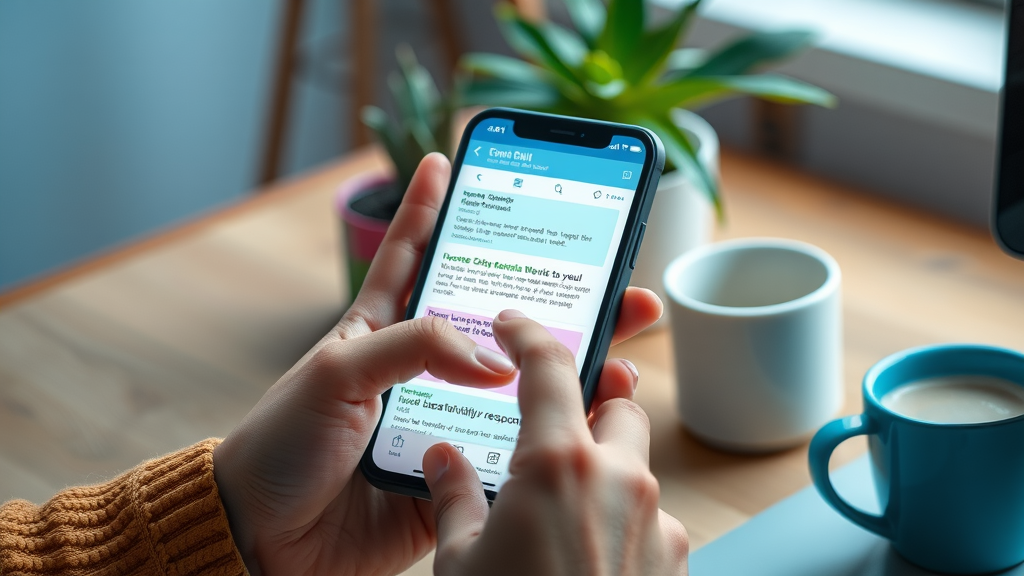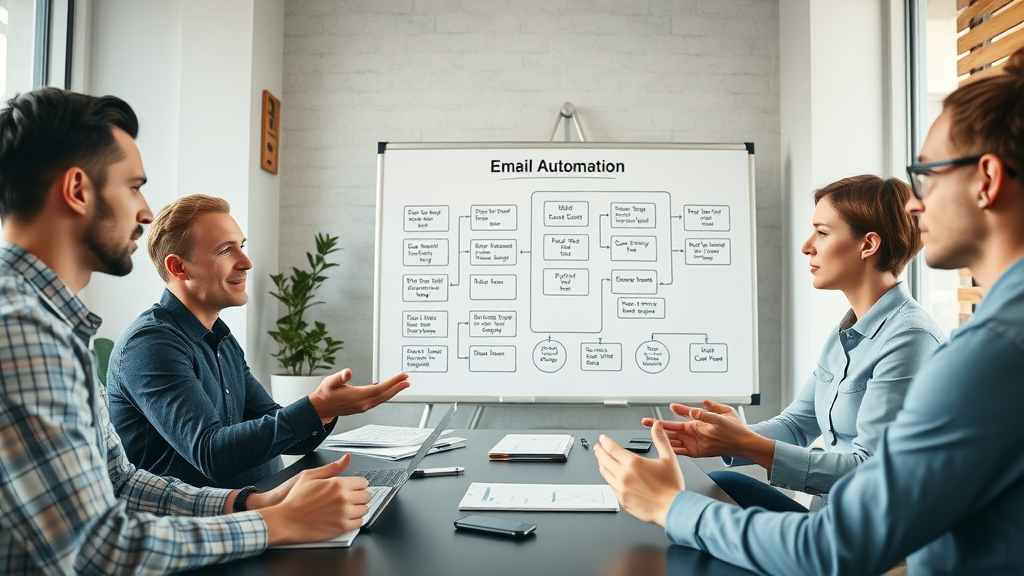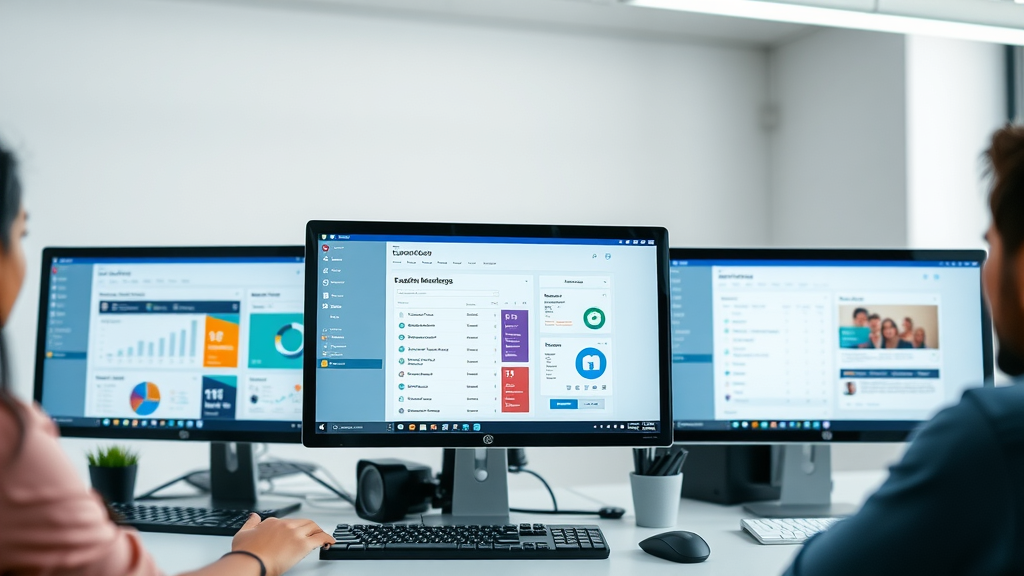Email Marketing Campaigns for Local Businesses That Convert

Discover why over 80% of local businesses report that email marketing remains their highest ROI digital channel—are you maximizing its potential?

Did you know that over 80% of small businesses still name email marketing campaigns as their top digital channel for return on investment? If you’re a local business owner in a sea of competition, capitalizing on this power can be a game changer. Whether you’re aiming to fill your storefront, outshine competitors, or create loyal customers with every message, this guide breaks down proven strategies and real-life examples to help you unlock hyperlocal growth. Prepare to turn every email into a sales engine for your business!
Why Email Marketing Campaigns for Local Businesses Are Essential for Growth
Email marketing campaigns for local businesses are not just affordable—they’re also effective in building genuine, repeat relationships with local customers. Unlike fleeting social media trends, email marketing gives a small business direct access to its audience’s inbox, allowing promotions, updates, and offers to be delivered straight to the people most likely to walk through the door or order online. The power of email is in its ability to reach receptive audiences, foster two-way communication, and drive sales far beyond what is typically possible with traditional advertising methods.
Consider this: a strong email marketing campaign lets you tailor content specific to your neighborhood, highlight seasonal events, or deliver last-minute deals based on what you know about your loyal shoppers. For small businesses, the ROI is tangible—email marketing can transform a slow week into a record-breaking one simply by reaching your audience where they’re most active: on their phones and at their desks. In an era where every marketing dollar counts, the right campaign can turn a modest email list into a local powerhouse of repeat business and referrals.
How Email Marketing Empowers Small Business Owners to Compete Locally
For local business owners, competing against national chains and online giants often feels overwhelming. Email marketing empowers small business owners by providing a direct line of communication with their target audience—no massive budget required. By sending personalized, region-specific offers, event invitations, and updates, you can outshine larger competitors with a more personal touch. Segmenting your email list allows you to target promotions only to those who care most, such as long-term customers or those who haven’t visited in a while.
In practice, a bakery could notify regulars about daily specials, while a boutique gym can invite lapsed members back with a time-limited offer. The power of email means that even the smallest small business owner can create campaigns that feel tailor-made for every recipient. This level of relevance boosts engagement, strengthens local loyalty, and ensures that every marketing effort directly supports your business goals and customer retention.
Statistics Proving the Value of Email Marketing Campaigns for Local Businesses
Statistics back up the real-world value of email marketing campaigns for local businesses . According to industry research, open rates for local business emails average between 20-30%, with click-through rates typically between 2-5%. These results consistently outperform organic social media posts and many paid ad formats, showcasing the unique ability of email to directly engage audiences. For every dollar spent on email marketing, small businesses see an average return of $42, highlighting its efficiency and unrivaled ROI.
Local businesses also benefit from the power of email in ways that extend beyond metrics. Surveys show that email nurtures brand awareness, drives foot traffic, and leads to higher customer satisfaction. When compared to other channels, email newsletters perform especially well for involving the community, launching products, and running referral programs.
“The average ROI for email marketing is $42 for every $1 spent—making it a cornerstone for small business digital strategy.”

Step-by-Step Guide: Building Effective Email Marketing Campaigns for Local Businesses
- Defining Your Local Audience with Precision
- Segmenting Your Email List for Best Results
- Personalization Strategies That Resonate Locally
- Scheduling and Automation Tips for Small Businesses
How to Build a Targeted Email List for Small Business Success
Successful email marketing campaigns start with a well-built, targeted email list . Prioritize gathering email addresses from real, local customers—either in-store at checkout, via your website, or during local events. Make signups enticing with offers like discounts, early access to new products, or invitations to store events. The more relevant your list, the higher your open rate and eventual conversion rate will be. Consider actively inviting customers to join with clear calls to action and reassuring them their information will remain private.
To maximize your results, frequently clean and update your email list to ensure it only contains actively engaged local subscribers. Segment your list by interests, purchase history, or how frequently people visit your location. This simple segmentation can dramatically boost the effectiveness of future email campaigns and ensures your small business marketing strategy remains focused on actual, engaged audiences.

List Building Tools and Strategies That Maximize Local Leads
Modern list-building tools are tailored for local businesses and can help automate the process of collecting and managing email addresses . Use integrated sign-up forms on your website that sync with major email marketing platforms like Mailchimp, Constant Contact, or ActiveCampaign. In-store tablets or mobile devices can double as email collection stations during checkout, while QR codes on receipts or displays encourage signups with a quick scan.
Promoting your email list through social media, community partnerships, and local events is another effective strategy to attract engaged leads. If you sell online, offering an “abandoned cart email” reminder not only captures sales but also adds to your list. Always focus on providing value in exchange for an email sign-up—whether that’s a first-purchase discount, a free digital guide, or access to exclusive community deals.
Mastering the Subject Line: Boosting Open Rates in Email Marketing Campaigns for Local Businesses
Writing Compelling Subject Lines for Small Businesses
Subject lines can make or break your email marketing campaign . For small businesses , standing out means using relevant, concise, and occasionally playful copy that speaks directly to local interests. Anchor your subject line with personalization (“[Name], your coffee is ready!”), local references (“Springfield’s Secret Sale”), or urgency (“Last Chance!”). Include your business name where appropriate, and aim for clarity—your recipients should instantly recognize that the email provides something valuable or interesting.
Be sure to A/B test different subject lines to see which yields higher open rates . Avoid spammy language or ALL CAPS, as these often land your marketing effort in the junk folder. Complement your subject line with a compelling preview text, and consider your target audience : what will resonate most, and what makes them take notice?

Tested Subject Line Examples That Drive Engagement
Not sure where to start? These proven templates have boosted open rates for many local business email campaigns :
| Subject Line Type | Open Rate Increase | Ideal Business Type |
|---|---|---|
| Urgency (“Last Chance!”) | +22% | Retailers, Restaurants |
| Personalization (“[Name], Special Offer”) | +14% | Service Providers |
| Local References (“Springfield’s Secret Sale”) | +18% | Any Local Business |
Designing High-Converting Email Marketing Campaigns for Local Businesses
- Responsive Email Templates for Small Business Branding
- Balancing Images and Text for Local Appeal
- Mobile Optimization: A Must for Local Audiences

A visually engaging, well-structured email template fosters trust and encourages positive brand association. Use consistent branding (logo, colors, and tone) throughout your emails, ensuring every touchpoint matches your offline and online presence. Balancing images and text is key—include photos of your products, your team, or your vibrant storefront, but don’t overload the email with graphics. Striking the right balance keeps messages quick to load and easy to read, both on computers and mobile devices.
Do not overlook mobile optimization . With over 50% of emails opened on mobile devices, your email template must display perfectly on smaller screens. Test your campaigns on various platforms and devices. Use concise, punchy copy and clear calls-to-action. Finally, always review your email with an eye for accessibility—using large buttons, readable fonts, and alternative text for images to reach the widest possible audience.
Case Study: A Small Business Email Campaign That Increased Foot Traffic by 45%
A local boutique bakery set up an email marketing campaign targeting its regulars. By using a combination of “Last Chance” subject lines and a visually striking, mobile-optimized template, the bakery invited customers to an exclusive weekend tasting event. With just two emails, the campaign achieved an open rate of 33% and a click-through rate of 6%. On event day, foot traffic jumped 45% above average.
The secret? The emails used local language, featured photos of employees preparing treats, and included a map linking directly to the shop’s location. Follow-up thank-you emails kept the momentum going by rewarding attendees with a loyalty discount, further fostering community and repeat business.
Nurturing and Retaining Customers: Email Marketing Strategies Tailored to Small Businesses
- Welcome Series for New Subscribers
- Abandoned Cart Email Sequences for Local eCommerce
- Upselling and Cross-selling in Email Campaigns
Email marketing strategies go far beyond one-off promotions. Begin with a warm, authentic welcome series for every new email list subscriber—thank them, introduce your business story, and offer a new customer incentive. For ecommerce businesses, implementing an abandoned cart email sequence can recover lost sales with timely reminders and gentle encouragements, often personalized with customer names and specific items left behind.
Upselling and cross-selling within your campaigns add value both for the customer and your bottom line. Help customers discover related products, exclusive offers, or loyalty programs that make them feel seen and appreciated. Tailor recommendations based on past behavior or seasonal trends. The ultimate goal? Build long-term loyalty by ensuring every marketing campaign is as relevant and helpful as possible.
Effective Abandoned Cart Email Tactics for Small Businesses
To maximize conversions from abandoned carts, send your first abandoned cart email within a few hours of the cart being left. Use a subject line that gently taps into curiosity or urgency without being pushy, and include clear images and details about the left-behind products. Offering a small incentive, like a limited-time discount or free local delivery, can significantly increase the chance of recovery.
Test different variations of your cart email —change the send timing, incorporate local language, or show customer reviews from your community. For small businesses, mentioning exclusive, local benefits (“Only Springfield residents get free cupcakes on first orders!”) can be highly persuasive. Finally, ensure the checkout process is seamless, with clearly visible links or buttons leading straight back to the abandoned cart.
Measuring the Impact: Analyzing Results of Email Marketing Campaigns for Local Businesses
Key Metrics to Track in Your Small Business Email Campaigns
Monitoring your email marketing campaigns means looking beyond sends and opens. Track your open rate , click-through rate, and conversion rate to understand real engagement and business impact. Additional vital metrics include unsubscribe rate, bounce rate, and list growth over time—each helping you refine your approach. High open rates indicate your subject line and timing are on point, while strong click-through rates show your content and calls-to-action are resonating.
For local businesses , tracking in-store visits or online orders following a campaign gives tangible proof of ROI. Some email marketing tools now let you connect purchases or bookings back to recipient interaction, providing a clear, actionable view of your marketing success.

Interpreting Reports and A/B Test Data for Local Email Marketing
Regularly reviewing campaign reports allows you to make data-driven decisions. Conduct A/B testing for subject lines, send times, or visual layouts to identify what works best with your audience. Use these insights to continuously adapt your marketing strategies—try a series of shorter, segmented emails, or introduce recurring newsletters to build engagement.
Decoding metrics such as conversion rate helps you tie emails directly to in-store purchases or online sales. Lower open rates may suggest it’s time to update your list or rethink your content calendar. Always look at trends over time rather than relying on one-off spikes, and celebrate improvements as you iterate with every campaign.
| Metric | Benchmark | Local Business Relevance |
|---|---|---|
| Open Rate | 20-30% | Shows Email Resonance |
| Click-Through Rate | 2-5% | Campaign Engagement |
| Conversion Rate | 1-3% | Direct Impact |
Compliance and Best Practices in Email Marketing Campaigns for Local Businesses
- Understanding CAN-SPAM and GDPR for Small Business Owners
- Building Trust with List Subscribers
- Ethical List Growth: Opt-Ins and Transparency
Every marketer must know the rules: compliance with CAN-SPAM (in the U.S.), GDPR (in the EU), and similar regulations keeps you from fines and builds trust with your customers. Always obtain explicit consent (opt-in) before sending any promotional email. Provide clear, easy unsubscribe options and use honest subject lines and sender information.
Transparency and respect are the foundation for ethical email marketing. Regularly remind subscribers why they’re receiving your emails, and protect their data. Avoid shady list-building tactics—never buy lists and always nurture organic growth. Over time, a list built on trust and value will yield more loyal customers, better engagement, and stronger ROI.
“Trust is currency in local business—ethical email marketing is your vault.”

Video Guide: Setting Up Your First Email Campaign for Small Businesses
Ready to put these principles into practice? Watch this step-by-step video tutorial tailored for local business owners. You’ll learn to create, design, and launch your first successful email marketing campaign —with real workflow demos and best practices in action.
Watch: A Step-by-Step Tutorial on Building Local Email Campaigns from Scratch
This tutorial covers everything from importing contacts and choosing email templates , to writing engaging copy and analyzing first-send metrics. Perfect for small business beginners!
Advanced Tactics: Automation & Segmentation in Email Marketing for Local Businesses
- Behavioral Triggered Emails for Small Businesses
- Event-Based Campaigns: Grand Openings, Sales, and Anniversaries
- Customer Journey Mapping for Email Marketing Campaigns
Take your email marketing campaigns to the next level with automation and segmentation. Behavioral triggers—such as emails sent after a purchase, for birthdays, or following a website visit—ensure every message is timely and relevant. Event-based campaigns (grand openings, community sales, anniversaries) keep your brand top-of-mind, strengthen local ties, and attract new shoppers.
Mapping the customer journey allows you to chart every step from first signup to repeat purchase, identifying the best moments for targeted content. Use segmentation to group recipients based on interests, past purchases, or engagement level, delivering more personalized, effective emails that reliably boost ROI.
Case Study: Marketing Campaign Automation that Doubled Repeat Business
A neighborhood pet store implemented a series of automated email campaigns: new pet owner welcome series, timely reminders for pet vaccinations, and birthday coupons for furry friends. Through simple automation and segmentation by pet type, repeat business doubled in six months, and customer reviews surged. The key? Consistently relevant, community-driven communication that felt one-to-one—even at scale.

Video Breakdown: Subject Line Split Test Results for Small Businesses
Watch this quick video analysis: see how varying a subject line can instantly change open rates and discover real-world examples of dynamic subject lines in action. Use the results to test, tweak, and strengthen your own future campaigns for maximum impact.
Dynamic Subject Lines in Action: Behind the Data
In the split test, emails using local references and personalized names consistently outperformed generic headlines. The lesson? What feels “custom-made” for your community or customer frequently wins the open and, ultimately, the business.
Expert Insights: Small Business Owner Experiences with Email Marketing Campaigns
“Email marketing helped me reach more local customers—faster and on a budget.” – Local Retailer

Top Tools and Services that Power Email Marketing Campaigns for Local Businesses
- Review: Best Platforms for Small Businesses
- Comparison Table: Email Marketing Tools Ranked by Features
- Integrations for Local Business CRM Systems
| Tool | Best For | Pricing |
|---|---|---|
| Mailchimp | Ease of Use | Free – $15/mo |
| Constant Contact | Local Event Invites | $20/mo |
| ActiveCampaign | Automation | $9/mo |

What You’ll Gain: The Impact of Effective Email Marketing Campaigns for Local Businesses
- Increased Local Foot Traffic and Online Orders
- Improved Customer Loyalty
- Actionable Insights to Make Data-Driven Decisions
Effective email marketing campaigns for local businesses mean more shoppers in your store, more online orders, and customers who come back time and time again. With insights from every campaign, you’ll be able to adjust in real-time—turning data into dollars and happy local fans.
People Also Ask: What is the best email marketing for a small business?
Choosing the Right Platform for Small Businesses: Essential Features and Local Considerations
The best email marketing platform for small businesses depends on your unique needs. Look for intuitive design, strong automation, responsive email templates, and easy integration with your point-of-sale or CRM system. Mailchimp, Constant Contact, and ActiveCampaign all offer robust options suitable for most local businesses. Ensure your chosen tool can segment email lists , A/B test subject lines , and provide real-time analytics to tailor marketing strategies to your audience and maximize your open rate and conversions.
People Also Ask: Do local businesses need email marketing?
Why Email Marketing Is a Game Changer for Local Businesses
Absolutely. Email marketing campaigns give local businesses the power to nurture loyal customers, reach their target audience directly, and deliver hyper-relevant content cost-effectively. You can send special event invites, promote seasonal sales, and launch exclusive offers with immediate local impact—something no other digital channel matches in efficiency or ROI.
People Also Ask: What is the 80 20 rule in email marketing?
Applying the 80/20 Rule to Your Local Business Email Campaigns
The 80/20 rule in email marketing means focusing 80% of your content on providing value—advice, community news, or tips—and just 20% on overt promotion. For local businesses, this strategy builds engagement, trust, and consistent open rates while still driving sales. In practice, send four helpful or entertaining emails for every promotional one to keep your email audience feeling valued and eager for your next message.
People Also Ask: What are the 5 T’s of email marketing?
Understanding the 5 T’s and Their Application in Email Campaigns for Small Businesses
The “5 T’s” of email marketing are Targeting, Timing, Testing, Tracking, and Tone. Targeting means segmenting your audience. Timing is about sending emails when your audience is most receptive. Testing involves optimizing subject lines and content. Tracking requires monitoring metrics like open rate and conversion rate. Lastly, Tone refers to matching your messaging style to your brand and customer preferences. Together, these create a framework for consistently successful email campaigns.
FAQ: Maximizing Success with Email Marketing Campaigns for Local Businesses
- How often should a small business send marketing emails? Most small businesses see best results sending 1–4 emails per month. This keeps you top of mind without overwhelming your subscribers or increasing unsubscribe rates.
- What’s the best time to send email campaigns? Mid-morning (around 10am) on weekdays and early evenings tend to yield the highest open rates for local audiences. Always A/B test to see what works best for your list.
- How do you avoid the spam folder? Only send to people who’ve opted in, avoid excessive promotional language or ALL CAPS, use consistent sender info, and always include a visible unsubscribe link.
- What types of content convert best locally? Local event invites, exclusive deals, personal stories, and timely news unique to your community have the most impact. Include clear calls-to-action that direct readers to your store or online shop.
- How do you track ROI on email marketing? Use your platform’s analytics to monitor open, click-through, and conversion rates. For in-store results, connect campaigns to redemption codes or track foot traffic during promotions.
Powerful Takeaways from High-Converting Email Marketing Campaigns for Local Businesses
- Personalization and relevance win local inboxes.
- Consistent branding boosts recall among small business customers.
- Test, analyze, and iterate to grow campaign ROI.

Ready to Amplify Your Sales? Launch High-Impact Email Marketing Campaigns for Local Businesses Today
Get started now—build a targeted email list, craft irresistible campaigns, and watch your local business thrive. The tools, strategies, and analytics you need are within reach. Start your first campaign and experience the results firsthand!
To enhance your understanding of effective email marketing strategies for local businesses, consider exploring the following resources:
- “Email Marketing for Local Businesses: How to Stand Out in Your Community” ( mineral.io )
This article provides insights into segmenting your audience, creating community-focused content, and sending time-sensitive offers to engage local customers effectively.
- “Top Email Marketing Tactics for Local Businesses” ( sovdirectory.com )
This resource outlines strategies such as personalizing emails, crafting compelling subject lines, and optimizing for mobile devices to enhance engagement and conversions.
By implementing the strategies discussed in these articles, you can develop more targeted and effective email marketing campaigns that resonate with your local audience.





